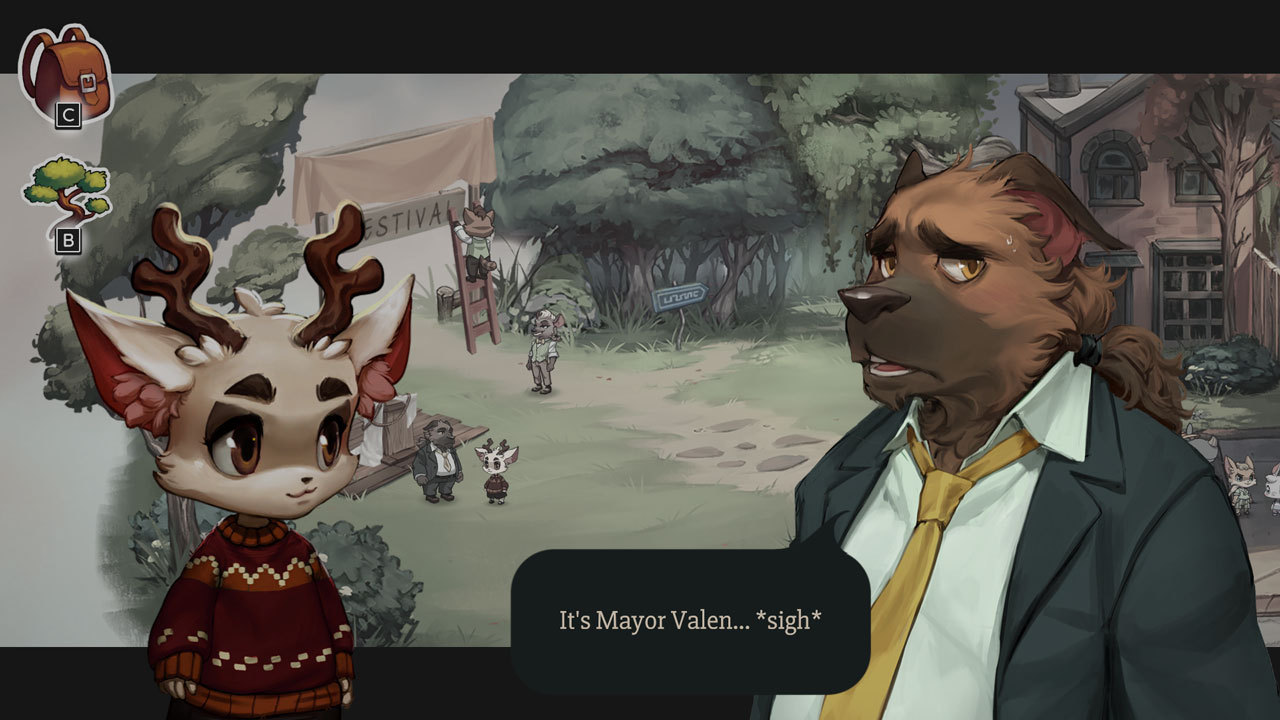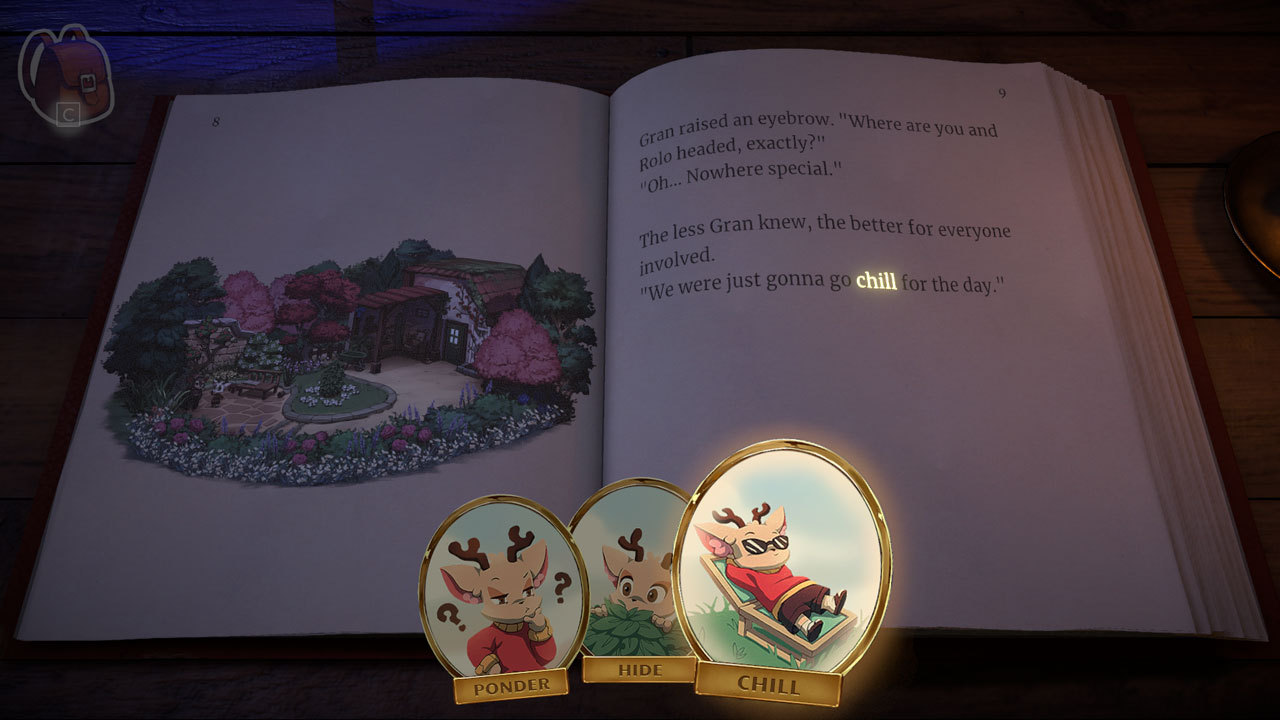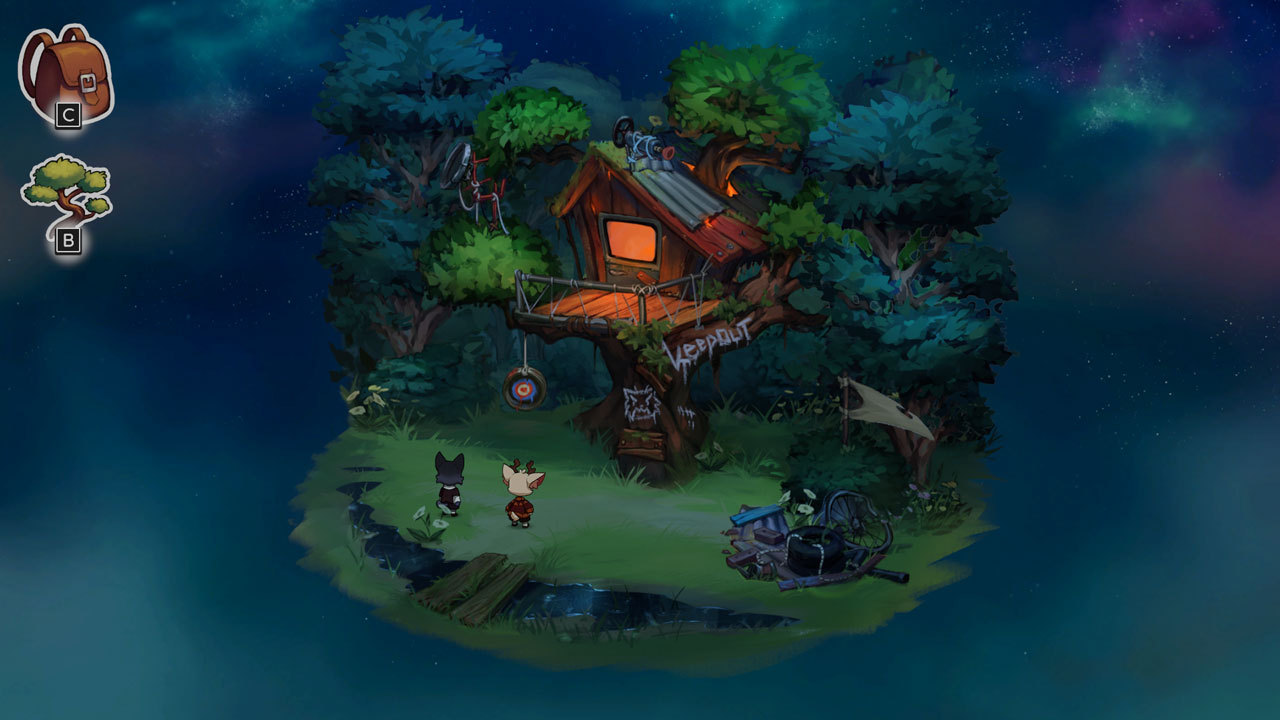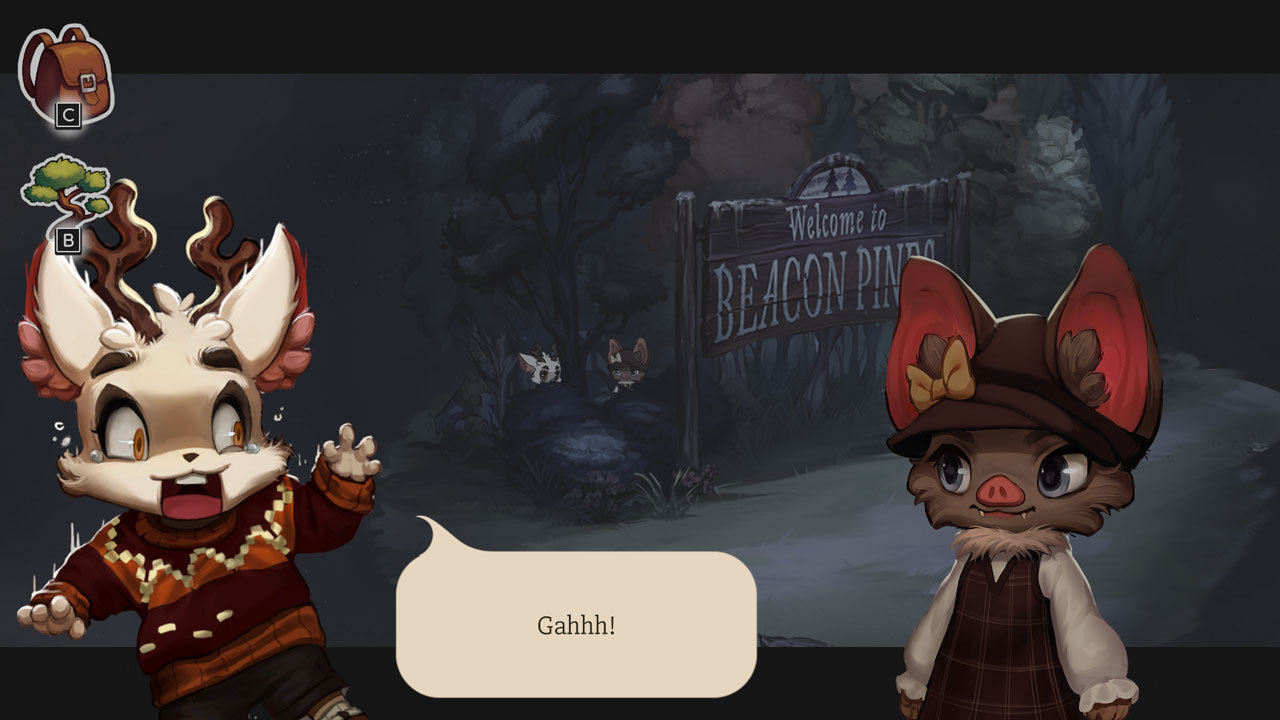Beacon Pines PC Review
A narrative, time-bending adventure with the cutest little characters ever.
Reviewed by LCLupus on Sep 21, 2022
Beacon Pines is the latest game by Hiding Spot Games, and it is simultaneously adorable and seemingly child-friendly but also fundamentally not child-friendly. You may get the impression that it’s something for kids based on the storybook art style and the fact that every main character is a kid, but there’s a little too much child murder for that to be the case.

Beacon Pines is a narrative adventure game where you play as young Luka, a cute little twelve-year-old kid who has a treehouse fort with his best friend Rolo, and they, along with the new kid in town, Beck, go on adventures together. These adventures start out as pure kid stuff. They want to explore the outskirts of their town and have fun, but then it turns out that things aren’t quite right in Beacon Pines, which is also the name of the town, and they need to figure out what to do, whom to trust, and how to save themselves and others.
Beacon Pines is somewhat reminiscent, in terms of a bunch of kids doing what the adults can’t, of an eighties movie like The Goonies or an eighties-inspired show like Stranger Things. But the primary influence here, as it’s about a small town with dark secrets to hide, is Twin Peaks. And suppose you’re looking for a somewhat similar game, you could easily look towards Night in the Woods, but more in terms of a strange town with something under the surface and tons of townspeople to chat to rather than the more millennial existential dread that pervades Night in the Woods. This is about kids solving a mystery! Not a college dropout who now must, awkwardly, return home and face her parents.

In many ways, Beacon Pines plays like Night in the Woods but from an isometric perspective rather than a 2D one. You run around town, chat with townspeople, solve simple puzzles now and then, have minimal overall interaction with the world itself, and occasionally make choices that influence the direction of the narrative. Beacon Pines is not a difficult game; it’s a game trying to tell a story.
Now, it isn’t easy to separate a game like this from its story, as the gameplay is essentially entirely in service to it. But the gameplay does do some interesting things with regard to how this narrative is presented.
So, Beacon Pines is a narrative-centric game, but it’s also a game that wants you to explore its world. It wants you to look at every piece of the world, interact with every interactable thing, and chat with every person in town every single day. There are always new things to hear and to learn. And this is where the game implements its Charms system.

A Charm is a kind of reward token you receive for chatting and exploring. They look like cards with cute artwork on them of the main character doing something or some item that can be used. Charms allow you to make choices in the game. Now and then, Beacon Pines will effectively pause to give you a so-called Turning Point. A Turning Point is a part of the game that will lead to diverging paths in the narrative. And these divergences can be quite significant, but they also aren’t, as we’ll get to in time.
Each Turning Point might be something like choosing between standing up for yourself against a bully or not doing anything to stop the bully. Both options lead to diverging paths, and any diverging paths can prematurely end the game. However, because Beacon Pines uses a storybook aesthetic with a narrator who’s constantly chiming in, if you accidentally end the game early, which often results in your death, the narrator will tell you that a different choice could have been made somewhere along the line that would have stopped this from happening.

This is where we get to the use of time in the game. Beacon Pines is a time-bending experience too. Each of the Turning Points can be returned to at any point and retried with a different charm to hopefully reach a better outcome. Each of those charms can be found by exploring the world and trying alternate narrative routes through time. So you may go one way through time and end up getting snatched by the bad guys, and so you try a different timeline where you eventually find a Charm that can help you escape the bad guy who tries to snatch you. So, you return to the Turning Point where you were snatched and try out that new Charm to receive a different outcome, hopefully.
Now, this may make it sound like the game has many diverging paths, but not really. Beacon Pines is still a linear game; you just get to the proper ending via a non-linear path. Most of the “endings” are about you failing in some way, and so the only narrative path where you actually succeed is, obviously, the correct one. It’s also the only one that leads you to the credits. There are a limited number of Charms and a limited number of Turning Points, and once you’ve reached the end of one narrative path, you try out another.

However, just because it’s still linear, that doesn’t mean it’s a bad thing. Beacon Pines is a great adventure game with a great little narrative. It’s fun! In fact, it has a few good twists along the way, and while you may expect some of them, a few more of them will likely surprise you. And the fact that Charms are found through exploration and discussion means that the game incentivizes you to look around the world properly and interact with everything you can.
These Charms not only affect the Turning Points, but some of them are also rather specific. Not every Charm has to be found for you to finish the game. You’ll pretty much complete the game while talking to all the people you need to talk to, but Beacon Pines lets you go fishing. There’s an old pond where you can reminisce about your dad, who, in the story, died a few years before the game started, so you get to fish beside him using some of those charms. The things you catch are all items rather than fish, and they give you some cute moments with your dad that flesh out aspects of the world and characters. It’s a sweet thing.
Beacon Pines wants you to understand its main character, it wants you to have heartfelt discussions with those around you, and the game isn’t afraid to tackle topics like loss, despair, and loneliness. But it also wants to counter all those topics with love, support, and friendship. This is not a game about sadness, but rather a game about overcoming sadness and learning to have a support network around you. So, yes, it’s a game where the power of friendship saves you, but it’s a lot less hokey than presented in your standard JRPG.
Beacon Pines is a gorgeously rendered experience with fantastic storybook aesthetics, a metatextual narrator who tells you that things should have turned out better so asks you to go back and try again, a great cast of characters, a genuinely great narrative about the future versus the past in a struggling town, and it has an interesting gameplay gimmick in the Charm and Turning Point systems. Those systems may not be immensely robust, but they work well for what they’re trying to be.
Beacon Pines is a game worth recommending to anyone who enjoys narrative games, especially ones that aren’t too long, as this one is about 5-6 hours. Do not expect to be challenged in any real way because this game isn’t about that, but instead explore a town filled with charming anthropomorphic animal characters while relishing in the dramatic irony inherent in altering time and trying out new paths. Because while you know what happened in previous timelines, the characters don’t. So, expect some interactions with bad guys where you know they’re the bad guy, but your characters don’t. It makes for some great stuff. So, check it out if you want a good, fun time!
Justin van Huyssteen (@LC_Lupus)
Senior Editor, NoobFeed
Contributor, NoobFeed
Verdict
90
Related News
No Data.

